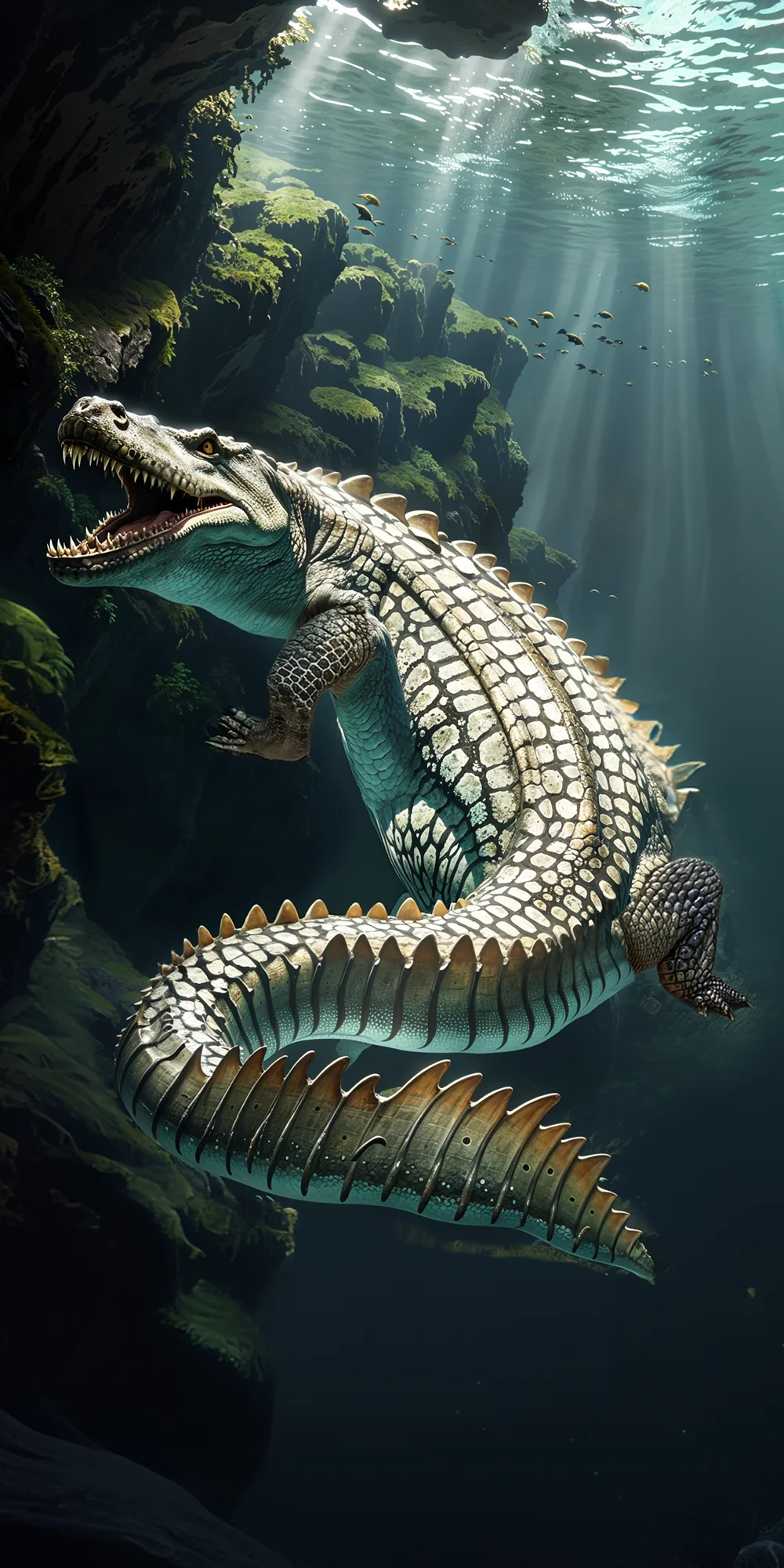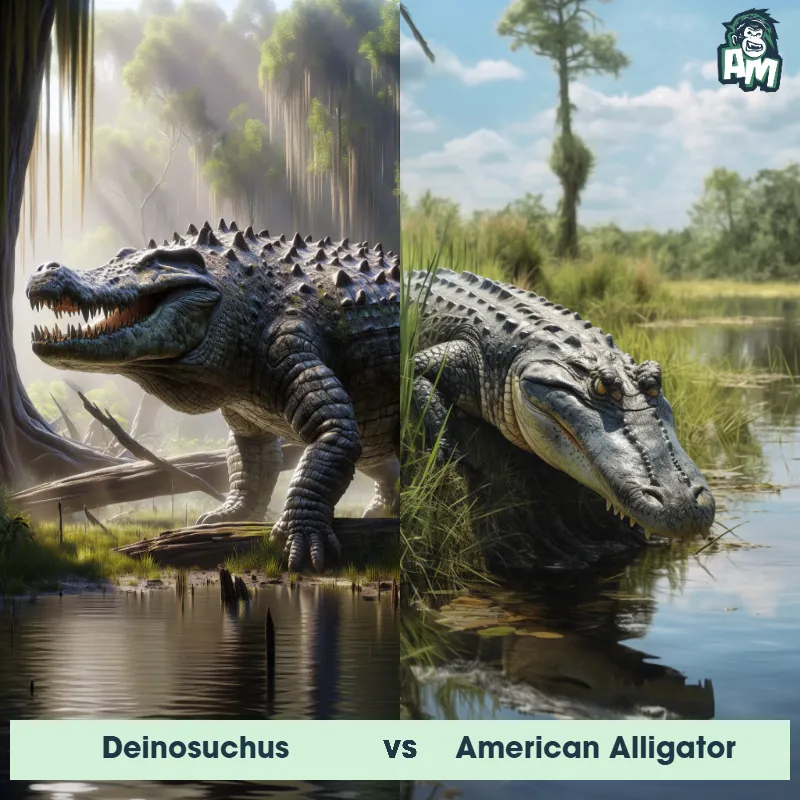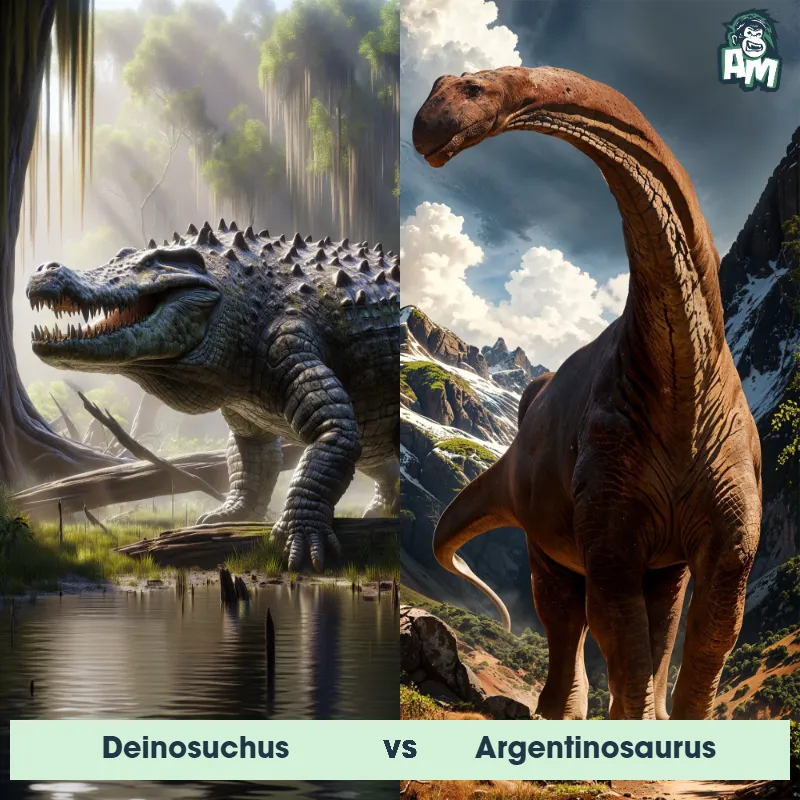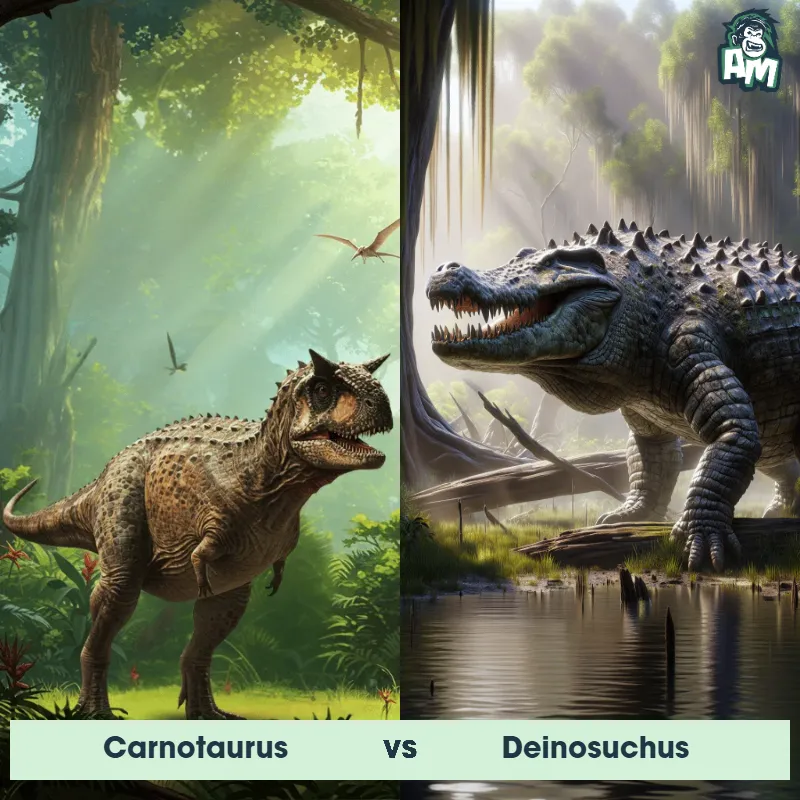The Deinosuchus
The Deinosuchus, also known as the "terror crocodile," was a massive prehistoric reptile that roamed North America during the Late Cretaceous period. It was one of the largest crocodilians to have ever existed, growing up to 33 feet in length. With its powerful jaws lined with large teeth, the Deinosuchus was a formidable predator that could take down even dinosaurs.

| Deinosuchus | |
|---|---|
| Size | Up to 35 feet (10.7 meters) |
| Weight | Up to 8,500 pounds (3,855 kilograms) |
| Speed | 20-25 mph (32-40 km/h) |
| Key Strength | Powerful bite force |
| Biggest Weakness | Relatively slim build |
| Scientific Name | Deinosuchus |
| Family | Crocodylidae |
| Habitat | Freshwater environments |
| Geography | North America |
| Diet | Marine mollusks, sea turtles, large dinosaurs |
| Lifespan | 35 years - 50 years |

The Deinosuchus
The Deinosuchus, also known as the "terror crocodile," was a massive prehistoric reptile that roamed North America during the Late Cretaceous period. It was one of the largest crocodilians to have ever existed, growing up to 33 feet in length. With its powerful jaws lined with large teeth, the Deinosuchus was a formidable predator that could take down even dinosaurs.
Fun Fact: The Deinosuchus had one of the strongest bite forces of any known animal, estimated to be around 23,000 pounds, making it capable of crushing the bones of its prey with ease.
| Deinosuchus | |
|---|---|
| Size | Up to 35 feet (10.7 meters) |
| Weight | Up to 8,500 pounds (3,855 kilograms) |
| Speed | 20-25 mph (32-40 km/h) |
| Key Strength | Powerful bite force |
| Biggest Weakness | Relatively slim build |
| Scientific Name | Deinosuchus |
| Family | Crocodylidae |
| Habitat | Freshwater environments |
| Geography | North America |
| Diet | Marine mollusks, sea turtles, large dinosaurs |
| Lifespan | 35 years - 50 years |
Deinosuchus Matchups
We use AI to simulate matchups between the Deinosuchus and other animals. Our simulation considers size, strength, and natural predatory behaviors to determine the most likely outcome.
Deinosuchus: Diet, Predators, Aggression, and Defensive Behaviors
What did Deinosuchus eat?
Deinosuchus was an apex predator that primarily fed on large terrestrial animals such as dinosaurs, turtles, and other aquatic creatures. It had a powerful bite force which allowed it to capture and consume prey much larger than itself.
Did Deinosuchus have any predators?
As apex predators, Deinosuchus likely had few natural predators due to their size, strength, and intimidating presence. However, younger or injured individuals may have been vulnerable to predation by other large carnivores or scavengers.
Were Deinosuchus aggressive?
Deinosuchus is believed to have been a highly aggressive predator, using its massive size and powerful jaws to dominate its territory and assert dominance over competitors. Its aggressive nature likely played a crucial role in its success as a top predator.
Did Deinosuchus fight?
Deinosuchus likely engaged in territorial disputes and competition for resources, leading to occasional fights with rival individuals. These battles may have involved head-butting, jaw wrestling, and displays of dominance to establish hierarchy within the population.
How did Deinosuchus defend themselves?
Deinosuchus likely relied on its massive size, armored scales, and powerful jaws as primary means of defense against potential threats. Its ability to deliver a bone-crushing bite would have been a formidable defense mechanism against predators or rivals.
What was Deinosuchus' biggest weakness in a fight?
Despite its impressive size and strength, Deinosuchus may have been vulnerable to attacks on its soft underbelly or eyes, which were not armored like the rest of its body. Additionally, its large size and slow movement may have made it more susceptible to coordinated attacks by smaller, more agile predators.
Fun Fact: Despite its enormous size and strength, the Deinosuchus was not a true dinosaur, but rather a distant relative of modern crocodiles.
Fun Fact: Fossil evidence suggests that the Deinosuchus may have been cannibalistic, as some specimens have been found with bite marks that match the size and spacing of Deinosuchus teeth.















